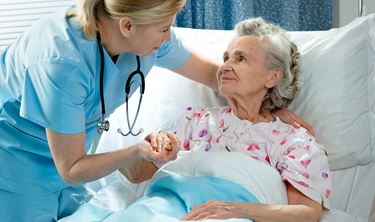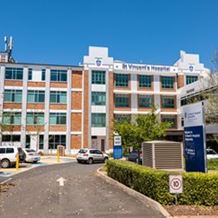Patient resources Patient Information & Safety- pressure injuries

- Home
- Our Hospitals
- St Vincent’s Private Hospital Toowoomba, QLD
- Patient Information
- Patient Information & Safety- Pressure Injuries
What is a pressure injury?
A pressure injury is damage to the skin, or the tissue underneath the skin, caused by unrelieved and prolonged pressure or by friction. These injuries used to be termed “bedsores” or “pressure ulcers”. A pressure injury can occur when you are unable to move due to illness, injury or surgery. A pressure injury can develop at home or in hospital.
Pressure injuries can also develop from poorly fitted shoes, under plasters, splints or braces and around medical equipment such as tubes, masks or drains.
Why is prevention important?
Pressure injuries can happen quickly so it is important to heed warning signs and act swiftly to prevent them occurring or becoming worse. Pressure injuries can be painful, take a long time to heal and may lead to other complications.
Who is at an increased risk?
You have an increased risk of developing a pressure injury if you are:
- Elderly or very young.
- Immobile or unable to reposition yourself.
- Underweight, eating poorly or have experienced recent weight loss.
- Overweight.
- Incontinent (of bladder and/or bowel).
- Experiencing reduced sensation/feeling.
- In general poor health.
- Have excess moisture or dryness of skin.
- Have a past history of a pressure injury.
Warning signs of a pressure injury
What to look for:
- Redness or skin discolouration.
- Tenderness, pain or itching in affected areas.
- Blistering or broken skin.
- Dry patches of skin.
- Shiny areas of skin.
- Warm patches of skin.
Reducing your risk of pressure injury
There are a number of simple things you can do to help reduce your risk of developing a pressure injury.
Move frequently to relieve pressure
- Change your position frequently when in bed or sitting in a chair.
- Consult your health professional for advice on timing of position changes.
- If you are unable to move yourself, staff will help you to change your position regularly.
Look after your skin.
- Advise staff if you have any tenderness or soreness over a bony area or if you notice any reddened, blistered or broken skin.
- Keep your skin and bedding dry. Let staff know if your clothes or bedding are damp.
- Regularly change incontinence pads.
- Use a soap-free cleanser and moisturiser, if appropriate.
- Avoid massaging your skin over bony parts of the body.
Eat a healthy diet and drink fluids regularly (Unless you are on a fluid restriction).
You may benefit from nutritional supplements if you are underweight, have recently lost weight, or have been eating poorly. Speak to your doctor or nurse for more information.
Look after your feet.
Check for signs of pressure injury on your feet. If you have diabetes or reduced sensation, check your feet regularly. Wear comfortable, well-fitted shoes.
Patients, families and carers are encouraged to be involved in discussions and decisions about the prevention and management of pressure injuries.
Let staff know if you notice any warning signs or if you have any questions or concerns.
The diagrams below show the areas of the body at risk of pressure injury when lying and sitting.
References
National Pressure Ulcer Advisory Panel, European Pressure Ulcer Advisory Panel and Pan Pacific Pressure Injury Alliance. Prevention and Treatment of Pressure Ulcers: Clinical Practice Guideline. Emily Haesler (Ed.). Cambridge Media: Perth, Australia; 2014
Pressure Injury Prevention: Information for people at risk. Released November 2015, © Clinical Excellence Commission 2015.
Pressure Injury Prevention Keeping bedsores at bay! Information for patients, families and carers. Queensland Health. 2015.
Preventing Pressure Ulcers – An information booklet for patients. The Victorian Quality Council, Safety and Quality in Health. 2004.
Related Content

Patient Information & Safety- Admission Information
Information about patient admission at St Vincent's Private Hospital Toowoomba.
Read More
Patient Information & Safety- Falls prevention
Information for patients about falls prevention.
Read More
Patient Information & Safety- Healthcare Associated Infections
Information about healthcare associated infections.
Read More
